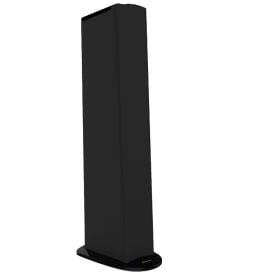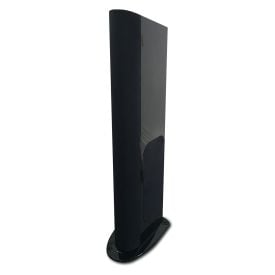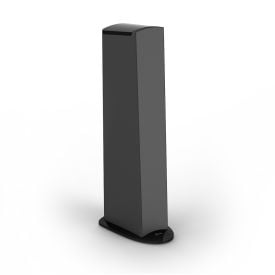GoldenEar Triton Series Speakers Overview
Since joining the market just a decade ago, GoldenEar speakers have probably captured more “best of” awards than any speaker brand in history. The two founders of GoldenEar Technology, Sandy Gross and Don Givogue both are gifted with incredible hearing, which funny enough is where the name of their new venture came from. Both of these men strived to recreate a sound that makes you believe you have musicians playing their instruments right in front of you. Their signature series is called Triton, and today’s article is an overview of all of the Triton models.
GoldenEar started out with a single speaker called the Triton, and in the last ten years, they have expanded the Triton line up to cover a pretty wide range of prices. We will go over some of the philosophies and technologies all of the Triton models share and then get into the differences between them. Hopefully, by the time you’ve read our brief overview, you’ll have a good understanding of which model would be the best fit for your room, budget, and listening tastes.
GoldenEar Philosophy of Sound
If you ask 10 audio enthusiasts what characteristics make a speaker great, you’ll likely get a few different answers. Music moves people in different ways and some of us like to interact with the music more than others. There are groups of people who usually do other things while listening and never really sit in front of their system and forget about everything but the music. Others are the opposite and enjoy sitting in the speaker's sweet spot and letting the music sweep over them.
GoldenEar speakers appeal to those of us who really enjoy getting into the music. One of their primary design goals is to present a three-dimensional audio image in front of us that makes us believe there are musicians standing in the room playing. To pull this off and make our minds believe there actually are musicians in the room, a speaker must totally disappear, present a lifesize sound, and reach down low enough in frequency response to produce convincing deep bass. This is what the Triton series is all about!
We suspect this is one reason why GoldenEar speakers have won so many awards. Most reviewers are serious listeners who are searching for that elusive perfect sound that makes them feel like a concert is occurring in their room. At Audio Advice, we also believe once you pull off great sound for music, home theater just comes as a bonus. Any great music speaker does a wonderful job in a home theater situation as long as the speaker company makes complimentary speakers to fill out a full surround sound system.
This is another reason GoldenEar is so popular. They have a full range of matching center channels, surround speakers, and Dolby Atmos-capable in-ceiling speakers so you can build a perfectly matched GoldenEar home theater system. As a matter of fact, most of the drivers are very similar or even identical in their matching theater products which gives you the most seamless presentation you could ask for.

Technology All Triton Speakers Share
Every single GoldenEar Triton speaker uses their High-Velocity Folded Ribbon (HVFR™) tweeter design. This is a tweeter that uses a diaphragm that looks like an accordion. It squeezes the air out rather than pushing it. This design gives them a lot more surface area compared to a conventional dome tweeter.
Folded ribbon drivers are not unique to GoldenEar as they are used by a few other speaker manufacturers and some ultra high-end headphones. Generally, this type of driver has lower distortion with greater efficiency and improved dynamics. You just have to be careful with the overall design as ribbons can sometimes be a little too upfront or bright sounding. This is far from the case with GoldenEar as their speakers have a very sweet natural sound.
All GoldenEar Triton tower speakers also share the same midrange/midbass driver technology. They all start out with a cast basket chassis. This is more rigid and inert than a cheaper stamped basket. The team at GoldenEar used a proprietary computer optimized cone design that enables them to have a very long throw and reach down deep into the bass range. Their midrange is super smooth and effortless.
Four of the six Triton models include built-in amplifiers for the bass drivers. These DSP controlled amps drive GoldenEars specially designed quadratic bass driver. This driver is 5” by 9” (larger on the Reference Model) in size with an oval shape. They are made with composite glass fiber and Nomez cone material and have a very large 1 ½” voice coil.
These oval drivers move a ton of air and are all coupled to infrasonic passive radiators with a similar shape. These are passive components that work as a port but give you more control. We also like the fact the powered speakers have an LFE input so you can run your subwoofer out from your home theater receiver into the powered Triton speakers.
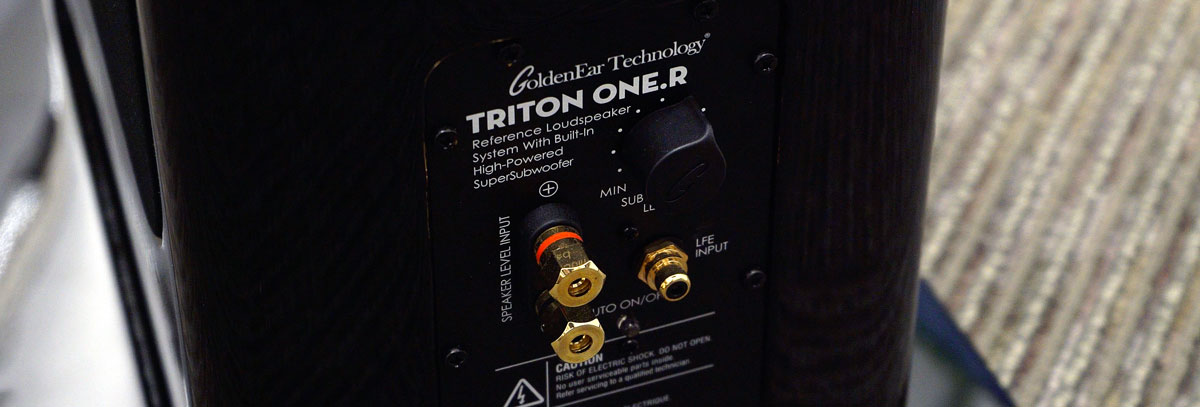
The advantages of having built-in subwoofers in a speaker are huge. Another one of our favorite brands, Vandersteen Audio does this in their upper-end series as well. The need for a subwoofer is pretty much eliminated for most rooms and you then get the advantage of two subwoofers which really helps smooth out the bass response in a room.
Plus, when you are trying to get sound that reaches way down into the lowest octaves, you don’t have to worry about blending a subwoofer from another brand. The integration is just fantastic when you do it this way. Finally, having the bass section powered, means you can get by with a much smaller amplifier for the rest of the speaker meaning you can either save some bucks or put the same money towards a better sounding, lower-powered amp.
You’ll have plenty of control over the bass output with the powered Triton towers as well as they include a volume adjustment for the subwoofer output.
The final thing all of these towers share is the fact you are just paying for performance. Most of the Triton tower designs are basically a sock pulled over the cabinet with no fancy wood finish present at all. We like this type of cabinet for home theater use as there is zero risk of light reflecting off the black sock. The very slender cabinet also adds to their ability to throw out a big, three dimensional sound stage with great width, height, and depth. All of the Tritons come with a nice set of spikes which we highly recommend on carpet to keep them from rocking.
We will now go into each of the speakers in the Triton series to help you understand the differences as you move up the lineup.
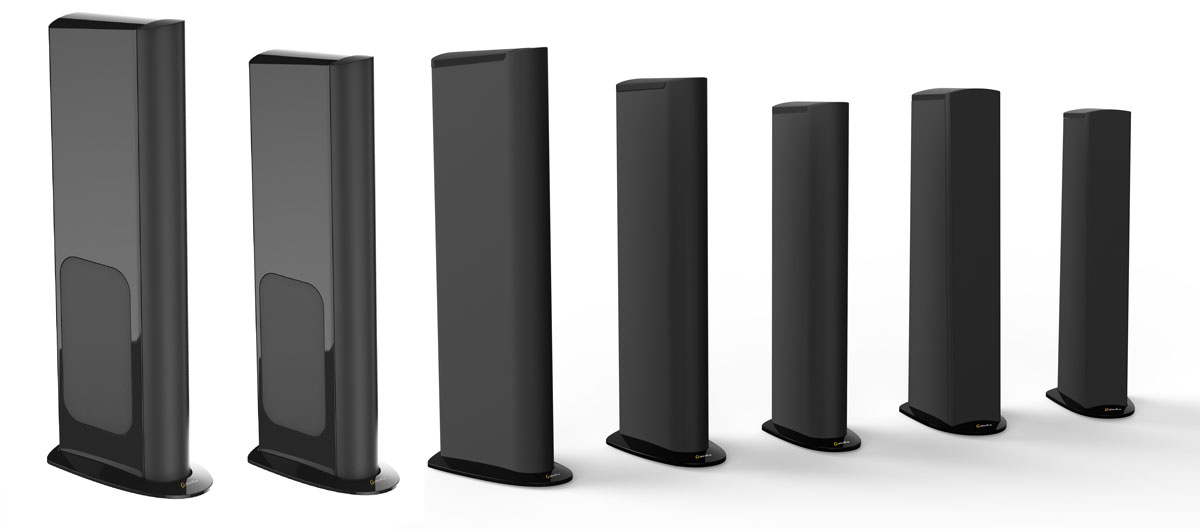
Triton Seven Loudspeaker
The entry-level model in the Triton series is the Triton Seven Loudspeaker, but it is by no means entry-level in the size of the sound field it can produce. These guys stand just shy of 40” tall but are less than 6” wide, which means the dual 5 ½” midrange/bass drivers have virtually no chance of cabinet diffraction. This is one feature that enables them to produce such a large and wide image.
They come with a bigger pedestal base which adds stability and has a neat, somewhat tilted back appearance. Like every single Triton, they have a simple black top and a sock wrapped cabinet to make most of the cost go into the sound of the speaker.
The Seven uses the same High-Velocity Folded Ribbon (HVFR™) tweeter as most of the other models which has such effortless, extended sound quality. The deep bass is augmented with two side-mounted 8” round sub bass planar radiators.
One thing we like about the Triton Seven is the fact it is pretty easy to drive with the most decent two-channel integrated amps or home theater receivers. They are rated at a sensitivity of 89 dB, but to our ears, they are easier to drive than the spec implies. We do think you should position them, like all Tritons, out in the room and a bit away from side walls to get the best 3-dimensional sound stage.
The great part is, you can get the classic GoldenEar Triton sound in the Sevens for well under $2,000 a pair and easily put together a matching surround sound for a pretty reasonable cost that is also easy to drive with a mid-level home theater receiver. Once you experience them, you’ll understand why they have won product of the year from several publications since they were introduced.
Triton Five Loudspeaker
If you imagine a Triton Seven that went to the gym, that would be the Triton Five Loudspeaker! When you compare the Fives and Sevens, you immediately notice deeper bass, more dynamics, and a slightly bigger sound field.
The Fives have the exact same tweeter as the Seven’s but it is supported with 2 6” cast basket midrange/bass drivers with a narrow and tapered cabinet like the Fives. These drivers got some trickle-down tech from the original Triton One. You also get double the number of 8” planar sub-bass radiators with two on each side.
To our ears, you do need to give the Fives a bit more breathing room than the Sevens, we prefer at least about 30” away from the sidewalls for best performance.
The slightly raked back cabinet is almost 5” taller than the Sevens, which does not sound like a lot, but they look a lot more stout to us. The Triton Five uses the same cabinet configuration with a black grill wrap and top gloss black cap.
Just like the Triton Sevens, the Fives have lots of home theater options to round out a great GoldenEar system. If you want to take what the Seven’s do so well and add more punch and dynamics, the Fives are a great choice. On the other hand, if you mostly like small jazz or acoustic and love a great three-dimensional soundstage, the Sevens are probably your best choice as you will not need the extra bass and some of us think they image a little better with the thinner cabinet.
Triton Three+ Loudspeaker
As you might have guessed, the “+” indicates these are an updated version of the original Triton Three Loudspeaker which was released in 2012. The Triton Three+ is the first of the Triton models with built-in powered subwoofers. It is also the first true three-way system with a dedicated tweeter, midrange, and bass driver.
The tweeter is the only driver shared with the Triton Five and Seven as all the others get upgrades in the Triton Three+. The midrange driver is their high definition version and is a 4 ½” version of it. This is coupled to the powered 5˝ x 9˝ Long-Throw Quadratic Subwoofer Bass Driver.
The Triton Three+ stands at 44” tall but is only 5 ¼” wide at the front. Started here, all of the Tritons get a curved cloth-covered grill which to our eyes makes them look even skinnier. The tapered cabinet grows to 7” wide at the rear houses 1 oval-shaped radiator on each side. Like the Five and Seven, the Three+ is also wrapped in a black cloth.
When you move into the Three+ level and up, the built-in amplifier really allows you to fine-tune the bass output of the Triton to match your room. The Three+ has an 800-watt amp for the single driver. We do recommend you place these away from sidewalls. Properly set up, the Triton Three+ can throw out a really convincing three-dimensional sound stage with.
If you compare the Five to the Three+ you’ll notice deeper bass extension, a bigger sound field, and we also feel the high definition midrange driver is a pretty big jump up in transparency over the types used in the Five and Seven. You do pay more for the Triton Three+ over the 5, but if you have the budget, it’s well worth it for the better midrange and bass impact you get with the built-in powered subwoofer.
Triton Two+ Loudspeaker
Think of the Triton Two+ Loudspeaker as the model Three+ for a larger room. At 4 feet tall and only 5 ¼” wide across the front, it still has a skinny appearance. With the Two+ you’ll get two of the same high definition midrange drivers and two of the same powered bass drivers. They also increase the size of the quadratic infrasonic radiators to 7” by 10” with the one on each side of the Triton Two+.
We find the Two+ to sound very similar to the Three+ with just more output capability and of course more bass impact with double the woofers. If your listening room is under around 15’ by 20’, you will probably be happy with the Three+. For larger audio or home theater rooms, the Two+ will fill up the room better and provide you with more bass slam.
Triton One.R Loudspeaker
Ok, when you move to the One.R Loudspeaker, you are changing the game! The One.R pulls a lot of technology from the top of the line Triton Reference and is quite different from the Two or Three+.
First, the tweeter is an improved model with more extension and transparency. Its magnetic structure is 50% larger than the previous models. Basically everything we like about the tweeter in the smaller Triton’s just gets better in the One.R. It is super open and extended with never any sense of harshness.
The midrange drivers also pull from the tech used in the Reference model. You’ll get two of a special 5 ¼” reference level cast basket drivers.
These are also in separate internal cabinets in the One.R. For the powered bass drivers, these are the same as the ones in the Two+, but you’ll get three of them mounted to the front coupled with 4 of the same passive infrasonic drivers used in the Two+.
The Triton One.R also is fairly tall at 54”, but with a skinny 5 ¾” front that tapers to 8” at the rear with 16” of depth, so these guys do start to look pretty big in your room. The One.R and Reference are the only two models not totally wrapped in a sock, with gloss black side panels. We see this as offering a more elegant appearance, but like all gloss speakers, you have to be careful how you place them to avoid having the image from your TV or especially your front projection screen from reflecting in the highly mirrored finish.
Another upgrade is the type of power amp used in the one, which is similar to those used in GoldenEar’s best-powered subwoofers. The large cabinet coupled with all of the drivers, pushes the sensitivity of the One.R up to 92 dB which is getting in that area that can really portray the dynamics of performers playing in your room.
While the One.R is almost twice the price of the Two+, it does offer big improvements everywhere over the Two+. We do feel you need a decent-sized room to support the One.R. We think the One.R best fits the listener who fell in love with the Triton Reference but can not afford its 10K price.
Triton Reference Loudspeaker
The Triton Reference Loudspeaker is the speaker many reviewers have compared favorably and better to speakers costing 5 times its price and more. It represents the pinnacle of what GoldenEar sound is about and while $10,000 is by no means inexpensive, like all GoldenEar speakers, you get a ton of sound for what you pay.
First, the Reference has a huge sound field. The almost 5’ tall cabinet does look imposing in most rooms, but when you shut your eyes and just listen, you truly get a lifesize presentation in front of you. The Reference uses the same tweeter as the One.R. There are two new 6” midrange/midbass drivers in separate internal enclosures. To our ears, these are by far the most transparent of any used in the Triton’s with an effortless quality that has won over many reviewers.
-
 GoldenEar Triton Reference Floorstanding Speaker
Special Price $4,995.00 Regular Price $6,250.00
GoldenEar Triton Reference Floorstanding Speaker
Special Price $4,995.00 Regular Price $6,250.00
The three powered bass drivers may look similar to those in the other Tritons but they actually have several improvements. First, they are physically larger at 6’ by 10” with 40% more surface area than the drivers used in the One.R, Two+, and Three+. They also have a much larger magnet structure and longer throw for more bass impact.
GoldenEar developed a new infrasonic radiator for the SuperSub X which gets retooled for the Reference. You’ll get four 10.5” x 9.5” side-mounted radiators in the Reference. With all this bass energy going to be present in the cabinet, GoldenEar spent a lot of time measuring with an accelerometer and came up with new methods to damp the cabinet to reduce internal vibrations.
They have extensive internal bracing, which even includes a steel plate built into the bottom. A unique combination of lambswool and Dacron was developed for internal damping. The critical crossover also uses very high-end components for improved transparency.
You’ll need a decent-sized room with the Reference to support the deep bass impact it can provide. It truly is almost flat all the way down to 20 Hz which is something you really have to experience to fully appreciate. If you want the full weight of a symphony orchestra or large scale rock concert to appear right in front of your ears, the Triton Reference can provide that elusive sound of a live performance. Their high sensitivity of 93.5 dB also means you’ll hear all of those little subtle dynamic changes easily.
For those of you with the budget for 10K speakers and up, the Triton Reference should be on your shortlist, and heck if you are thinking of speakers even 10 times as much, the Reference deserves serious consideration as you might be surprised at just how good it is for what it sells for!
Summary
It’s interesting, GoldenEar offers amazing sound for the money, but if you compare model to model, every time you move up, you hear more! In some cases, you need a larger room to fully support the next step up, but you can always hear the difference. It will really come down to your budget.
If you are a listener who wants to experience that magical three dimensional sound, with great dynamics and bass impact that makes the music sound live, GoldenEar is a great choice. Every single model offers far more sound for the money than most of the competition and it is super easy with their large variety of matching home theater speakers to put together a great surround sound system using Tritons as the main left and right speakers.




